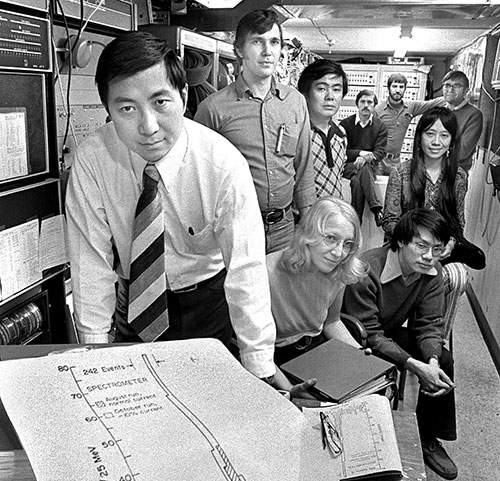1976
Nobel Prize in Physics
The 1976 Nobel Prize in physics was shared by a Massachusetts Institute of Technology researcher who used Brookhaven's Alternating Gradient Synchrotron to discover a new particle and confirm the existence of the charmed quark. Samuel C.C. Ting was credited for finding what he called the "J" particle, the same particle as the "psi" found at nearly the same time by Burton Richter.

Discovery of a New Heavy Elementary Particle
The 1976 Nobel Prize in physics was shared by a Massachusetts Institute of Technology researcher who used Brookhaven's Alternating Gradient Synchrotron (AGS) to discover a new particle and confirm the existence of the charmed quark.
Samuel C.C. Ting (at left, with his research team) was credited for finding what he called the "J" particle, the same particle as the "psi" found at nearly the same time at the Stanford Linear Accelerator Center by a group led by Burton Richter. The particle is now known as the J/psi.
Ting's experiment took advantage of the AGS's high-intensity proton beams, which bombarded a stationary target to produce showers of particles that could be detected by complex detectors. A strong peak in electron and positron production at an energy of 3.1 billion electron volts (GeV) led Ting to suspect the presence of a new particle, the same one found by Richter.
Their discoveries not only won the Nobel Prize; they also helped confirm the existence of the charmed quark — the J/psi is composed of a charmed quark bound to its antiquark.

Ting and his experimental team.


